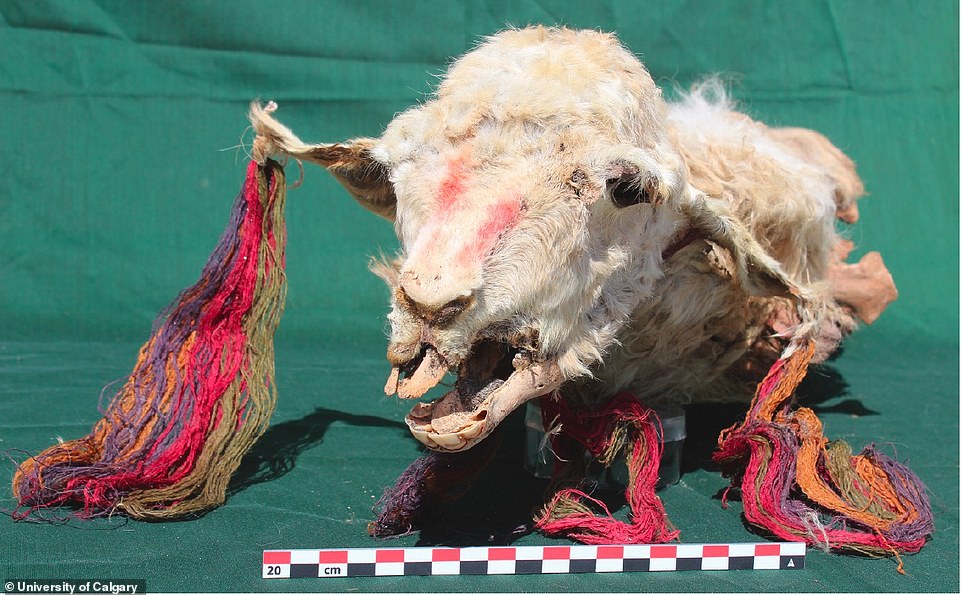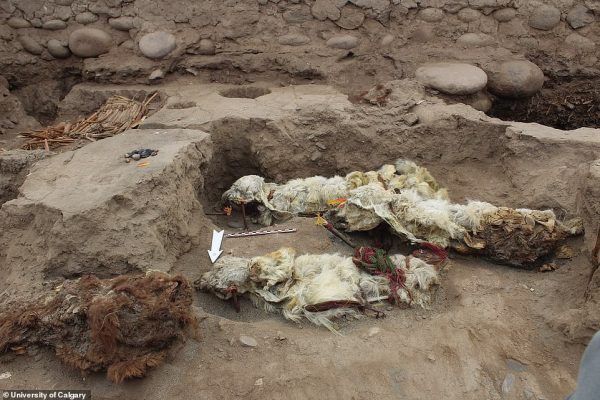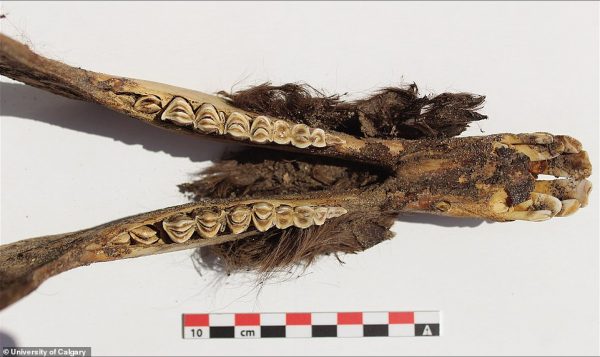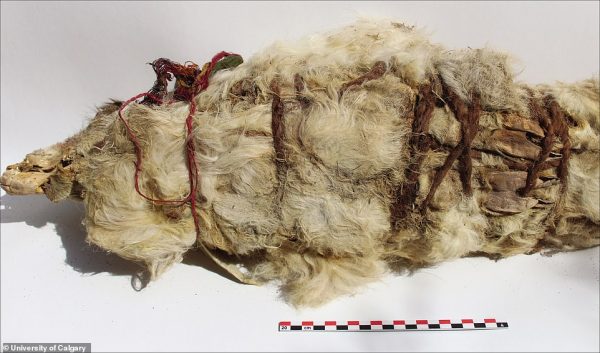Archeologists Find Sacrificial Llamas Buried Alive 500-Years-Ago in Peru

Archeologists have been working to excavate the remains of Tambo Viejo, an Incan civilization along the western coast of South America for over one hundred years but in 2018 found an unprecedented discovery.
The mummified remains of five llamas that were sacrificed to an Incan deity about five hundred years ago were found and were possibly buried alive.
The animals were decorated with red feathers, red paint and groups of colorful strings of red, green, yellow and purple which were attached to the ears and around the necks.

The white animals’ heads were painted with a red dot on the tops of their heads and a line from each eye ending at the nose. The brown llamas may have been painted but no dye is visible.
According to livescience.com, Lidio Valdez, an adjunct assistant professor in the Department of Anthropology and Archaeology at the University of Calgary in Canada and his team report that there were originally more mummies but robbers had already unearthed the graves and scattered the bones.
They were found under floors made of clay in the few remains of the buildings that made up two plazas. Four llamas, three white and one brown were found under the floor in one building and another brown one under another building.
They were facing east toward the rising sun when they were buried most likely because the sun or Tayta Inti, was a key deity of the Inca religion. The separated brown llama was most likely moved as it was missing its head and its string adornments were still in the tomb of the four other animals.
The team’s research paper at cambridge.org tells us that most llamas that were sacrificed were less than two years of age with many of them only a few months old.

The white colored ones were sacrificed to the sun and the brown ones were sacrificed to the creator god, Viracocha. Any animals that were multicolored were sacrificed to Illapa, the god of thunder and lightning. After they had decorated the animals the limbs were pushed up and tied under the body just before it was covered over.
It was frequently believed by archeologists that animal sacrifice by the Incas consisted of either slitting the throat or making an incision that allowed the priest to remove the beating heart but the corpses found here had no cuts on the body. This leads the scientists to believe the animals were buried alive.
A guinea pig, feathers from an exotic bird, maize cobs and a small amount of black lima beans were also found buried with the llamas.
The Spaniards living in Peru at the time claimed that the Incas, who also followed ancestor worship, used llamas, alpacas and guinea pigs for the most part as sacrifices but would even sacrifice their children to insure a good harvest or favorable weather.

Valdez believes the Incas rituals and associated celebrations included praying, singing and dancing which ended in a huge feast.
In his 1990 book, Inca Religion and Customs, Father Bernabé Cobo states that the Inca performed “rites and sacrifices with so much determination and so often that practically all the products that they harvested and all the things they made, and even their own children, were consumed in sacrifices”.
Rituals were often held each month and one hundred animals was the preferred number. Llamas were a commonly kept livestock with some herds reaching fifty thousand head.
They were a symbol of high status and provided milk, meat, hide, wool, fuel and fertilizer as well as performing like pack animals by carrying heavy loads on their backs.
In the autumn one hundred llamas were sacrificed to promote rain and in February another one hundred were sacrificed to stop the rain. Sacrifices were also held at planting time but many of these were for meat.
Another Article From Us: Ice Age Mining Camp Found ‘frozen in time’ in Underwater Cave
When times were stressful because of disease, drought or war, thousands of llamas would be sacrificed at one time. According to Valdez, “The finding adds important information about Inca ideology, something about which we knew from the writings of some early Spaniards, but never saw. Now we have the tangible evidence.”
